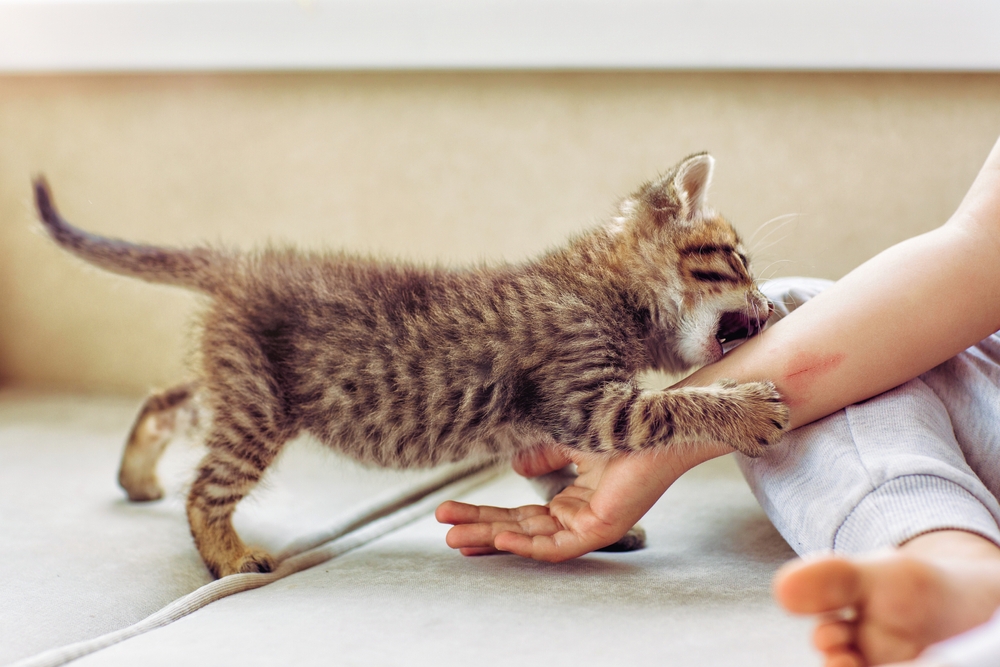Constipation in cats: Vet-approved guide on how to help.
Same as humans, cats can suffer from constipation too. For mild constipation, we hurry up to the bathroom cabinet to take some constipation pills, but when it comes to animals, things are a little bit different.
For example, if left untreated, prolonged constipation in cats may lead to permanent colon damage. Pooping should occur at least once every 24 to 36 hours for an average cat. In case your cat doesn’t go to the bathroom in more than 48 hours, it’s time to schedule a visit to the vet.
Veterinarians can also prescribe medications or suggest over-the-counter remedies, such as an enema, to help you treat your cat’s constipation symptoms. However, you should always consult a veterinarian beforehand because some human-grade enemas are typically toxic to cats.
Additionally, seeing a veterinarian can help determine whether the constipation is due to any underlying problems. Here are a few tips to help combat constipation alongside the medications your veterinarian has prescribed.

Change the diet
While you can’t per se prevent constipation in cats, you can always be more mindful of what your cat is eating. For example, switch to a different type of food that’s rich in fiber. Shifting the protein intake of your cat’s food (to lamb, chicken, etc.) can help the intestines move more freely and reduce inflammation, which decreases the chances of constipation.
Take it easy when changing your cat’s food. In the first week, mix the old with the new food. Let the animal get used to the smell and flavor slowly. Besides the cat food, you can also let your cat indulge in unsweetened plain yogurt to help it regulate the digestive system.
Mind the litter box
You probably never thought about this, but a dirty litter box or one with a bad litter type can be the two main factors of a stressed cat. What happens when an animal feels stressed? Yes, you guessed correctly: constipation.
To make your cat feel safe and sound, keep the litter box odor-free and spotless (clean it ASAP after each use!). Furthermore, if you decide to switch the litter, be careful because a lot of cats may reject it.
Besides other issues, having a bad “bathroom space” can cause constipation in cats more often than you think.
Make sure your cat drinks water
Constipation in cats can also occur due to dehydration because, compared to dogs, felines don’t drink too much water during the day. The best solution for this is wet food, which can be easily combined with low-sodium broth stock (preferably homemade) or the leftover water from tuna cans. You can also try to convince your cat to drink water by strategically placing water bowls near their favorite spots in the house.
Oh, and I almost forgot to mention it! Never give your cat tap water because it may increase the risk of developing intestinal worms, plus they might not even like the taste. You can buy filtered jugs or filters that fit straight onto your faucet if your home does not have in-line filtered water.
Is your cat a little bit too spoiled or picky, and for some reason, it won’t eat wet food? This happens rarely, but when it does, it’s even harder to make sure your feline is hydrated properly. To avoid constipation in cats that don’t like wet food, try to combine kibble with broth or with a supplement that can be either a treat or a topper.
Tiki Cat Born Carnivore Broths is a product recommended by vets and comes in 3 different flavors (salmon, duck and chicken, and beef), you can find it in almost every store, but if you want to avoid the hassle of in-store shopping, order it online from Amazon.
…Or you may add more litter boxes
If your home is large and you have only one litter box, your cat might have difficulty reaching it. So why not try scattering two or three litter boxes around the house? Cats are picky, and if they find a reason to hate the location of the litter box, it may lead to constipation. Maybe the covered litter box that gives your cat more privacy will convince it that is safe to go and pee or poop.
If you own a kitten and not an adult cat, you may need to try different types of litter boxes to see which one they like more.
Make sure your cat stays at a normal weight
Is your cat a little bit overweight? This may be one of the causes of constipation in cats. I wrote an article about this a couple of weeks ago that you can check here. Inflammation brought on by obesity slows down intestinal function. The stool then soaks up too much water, which leads to constipation. In extreme situations, there is so much belly fat that it physically prevents stools from moving.
Your vet can help you and your cat come up with a diet plan if your cat needs to lose weight.

Don’t let your cat be lazy
This may seem a little strange because cats usually sleep 12–16 hours, but one way to combat constipation in cats is to make them more active throughout the day. Encourage your cat to be more active by providing cat toys, cat trees, window seats, and additional playtime with you. Additionally, exercise will help your cat lose weight, provide enrichment, and reduce anxiety.
Help your cat be calm and happy
When their routines change, cats are sensitive to stress, which can easily lead to constipation. A more evident reason might be moving or bringing a new pet into the house. It might be less evident, such as a shift in your routine, the sound of construction nearby, or a new dog barking in the neighborhood.
Compared to dogs, cats may require more time to adjust to changes. However, you can use products like calming pheromones (Feliway), supplements (Solliquin® and Zylkene are popular), and/or medications to help reduce stress and anxiety. However, it is recommended to ask your vet about these medications. They might not be the best match for your cat!
Try home remedies until you go to the vet
It is Sunday evening and you notice that your feline is constipated. The vet isn’t available until tomorrow morning and you don’t want to give the animal random meds that “might” work. Add to the wet food some aloe vera juice, which is a helpful laxative, or if you don’t have any in the cupboard, you can try 1 tablespoon of olive oil or coconut oil.
Even though these oils don’t have a strong taste, make sure to thoroughly stir them with the food, otherwise, your cat may refuse to eat it.
Keep an eye on your cat
Start by keeping an eye on your cat’s stool consistency and frequency at least twice a week, and then every week or every two weeks after that. If you observe your cat straining during pooping or notice extremely hard, dry feces, get in touch with your veterinarian.
As long as your cat is healthy and does not have any other health issues causing constipation, it should recover within a maximum of two days. Just make sure you follow your vet’s instructions.
Related article: Pet First Aid – Essential Steps Before Reaching the Vet.












